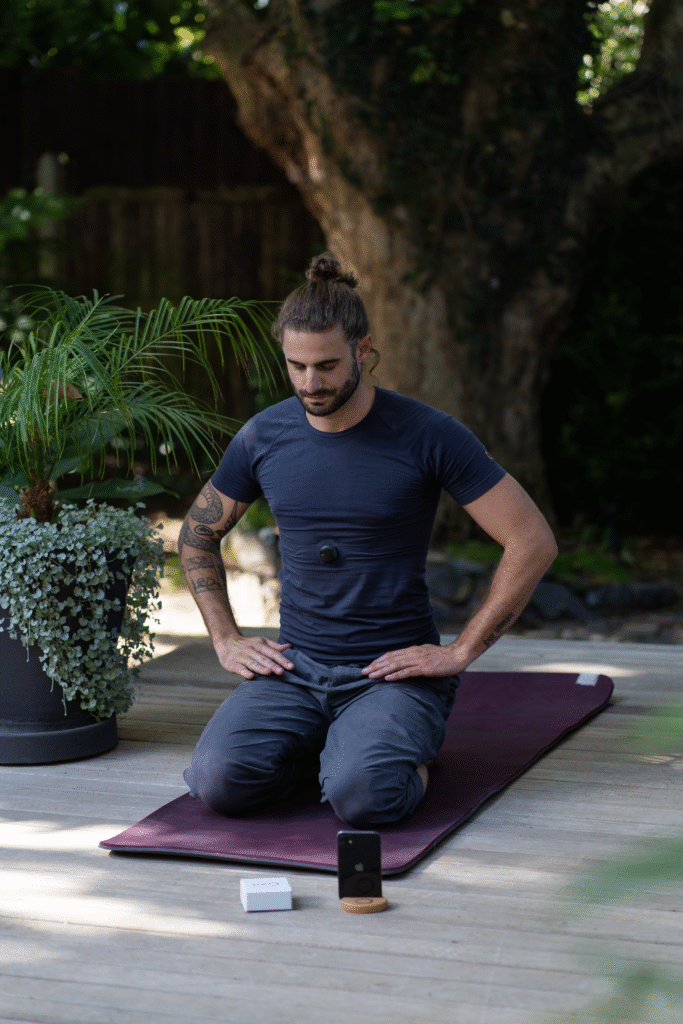Have you ever found yourself standing at the edge of a cold body of water, hesitating for just a moment before taking the plunge? That initial shock, the icy embrace as it envelops you—that sensation can do wonders for your breath awareness and control.
Understanding Breath Awareness
Breath awareness is about being acutely conscious of your breathing patterns. It’s more than just knowing when you inhale and exhale; it’s about understanding the rhythm and depth of your breath. By cultivating this awareness, you can learn to control your breath in various situations.
When your breath is calm and regulated, your body mirrors that state, promoting relaxation and clarity of thought. This connection between breath and awareness is incredibly powerful, especially in today’s hectic world.
The Benefits of Breath Awareness
Breath awareness can enhance your emotional and physical well-being. It can help mitigate stress, improve focus, and foster a more grounded sense of self. When you’re attuned to your breath, you can respond better to challenges and crises instead of reacting impulsively. Here are some of the primary benefits:
- Stress Reduction: An awareness of your breath can help manage stress and anxiety levels.
- Increased Mindfulness: It encourages you to stay present and engaged in the moment.
- Improved Performance: Whether in sports or daily tasks, breathing control can lead to better outcomes.
- Enhanced Sleep Quality: Practicing breath control can lead to more restful sleep.
The Role of Cold Water
Cold water has a unique way of interfacing with your physiological and psychological state. When you immerse yourself in chilly waters, your body’s reaction is immediate and intense. This shock can heighten your physical responses and, interestingly enough, enhance your breath awareness and control.
Physiological Responses to Cold Water
Your body turns to fight or flight when it experiences cold water exposure; your heart rate increases, your muscles tighten, and your breath quickens. While this response might seem unfavorable, it offers an excellent opportunity to cultivate awareness and control over your breathing.
- Rapid Heart Rate: Your heart pumps faster to maintain core temperature and ensure adequate blood circulation.
- Increased Muscle Tension: This results from the initial shock but will later serve to enhance relaxation techniques.
- Quickened Breath: The reaction typically results in shorter, shallower breaths. This transition is where conscious breath control becomes essential.
Emphasizing Control Through Discomfort
When you encounter cold water, developing control of your breath becomes an essential coping mechanism. If you focus on your breath, you can reclaim your body’s responses and shift from panic to calm.
- Short vs. Long Breaths: Initially, when your body is in shock, you might breathe short and fast. With practice, you can learn to intentionally slow down and take longer, deeper breaths.
- Mind-Body Connection: Sustained attention on your breath transforms your experience from mere survival to active engagement with your body.

Techniques for Enhancing Breath Awareness in Cold Water
You might be wondering how to harness those cold-water experiences to enhance your breath awareness effectively. Here are some practical techniques you can implement each time you step into chilly waters:
1. Focus on Inhalation and Exhalation
Before you immerse yourself, take a moment to visualize your breath. Imagine inhaling cool, crisp air and exhaling warmth.
| Step | Action |
|---|---|
| 1. | Inhale deeply through the nose. |
| 2. | Hold the breath for a moment. |
| 3. | Exhale slowly through the mouth. |
2. Use Counting Techniques
Counting your breaths can help you maintain a rhythm and regulate your breathing pattern.
| Step | Action |
|---|---|
| 1. | Count to four while inhaling. |
| 2. | Hold your breath for a count of four. |
| 3. | Exhale for a count of six. |
3. Progressive Muscle Relaxation
As your body reacts to cold water, consciously loosening muscle tension can assist in achieving better breath control.
| Step | Action |
|---|---|
| 1. | Tense a muscle group (like your shoulders) for a few seconds. |
| 2. | Release and focus on the breath as the tension dissipates. |
4. Visualization
Using visualization while focusing on your breath can enhance the experience. Envision warm, gentle waves washing over you, helping to calm your breath.
5. Mindfulness Practices
Engaging in mindfulness, not necessarily tied to breath, allows you to be present. Focus on the sensations of the water on your skin or the sound of the waves.
The Connection Between Cold Exposure and Breath Control
You might find it interesting that many athletes and practitioners of mindfulness emphasize cold exposure as a means to train breath control.
Enhanced Performance in Sports
For athletes, control over breath can lead to improved performance. Cold water immersion helps in building tolerance and regulating breath during high-stress situations.
- Enhanced Endurance: Practicing breath control while exposed to cold can help improve your physical endurance.
- Competitive Edge: Athletes often train their breath in cold environments to better handle stress during competition.
Mental Resilience
Cold water serves as a natural stressor that can develop mental toughness. By training yourself to control your breath in challenging conditions, you build resources for handling other life stresses.
- Mind Over Matter: The ability to remain calm in cold water translates to improved mental resilience in various life situations.
- Focus on Challenges: Cold water fosters a sense of accomplishment, helping you recognize challenges as opportunities for growth.

Practical Tips for Cold Water Immersion
So, how can you effectively incorporate cold water exposure for enhanced breath awareness? Here are some practical tips:
Gradual Exposure
If you’re new to cold water immersion, it’s wise to start slowly.
- Begin with Cool Showers: Start with cooler water before gradually transitioning to colder temperatures.
- Short Durations: Aim for shorter exposure times initially; think of it as a challenge to build up your endurance.
Engage in Breathing Exercises
While in cold water, be intentional about your breath.
- Scheduled Breathing: Set specific intervals where you focus solely on your breath—perhaps every minute for a slow 5-second inhale and a 7-second exhale.
- After-Session Reflection: Take a moment post-immersion to note how your breathing patterns changed throughout the experience.
Create a Supportive Environment
Cold water can be more enjoyable and less intimidating in a group setting.
- Buddy System: Find a friend to join you; sharing an experience can lessen anxiety.
- Communal Support: Consider joining a community that values cold exposure; the shared experience fosters encouragement and motivation.
The Science Behind Cold Water and Breathing
Understanding the science might deepen your appreciation for the relationship between cold water and breath control.
Physiological Changes
- Cold Shock Response: This occurs immediately upon immersion, characterized by gasping and hyperventilation. Learning to control your breath can counteract these reactions.
- Thermal Regulation: Your body adjusts its core temperature during cold water exposure, affecting blood flow and respiratory patterns.
Psychological Responses
Cold exposure tends to produce feelings of discomfort, yet it also enables a unique psychological resilience.
- Endorphin Release: Exposure often leads to an endorphin boost—think of that rush we seek.
- Cognitive Clarity: Focusing on breath amid discomfort sharpens cognitive function and allows for clearer thinking.

Conclusion
As you consider the ways cold water influences your breath awareness and control, remember that the experience is highly personal. Each plunge can teach you something new—maybe it’s about grounding yourself, building resilience, or simply learning to breathe deeply amidst challenges.
Understanding how your body responds to different environments can lead to more profound self-discovery. Whether you’re escaping into a chilly lake or braving an icy shower, embrace the challenge, keep your breath steady, and watch as both your awareness and control flourish.
So, the next time you find yourself standing at the water’s edge, take a deep breath, reflect on how far you’ve come, and dive in with newfound determination to make the most of the cold—your breath will thank you.

